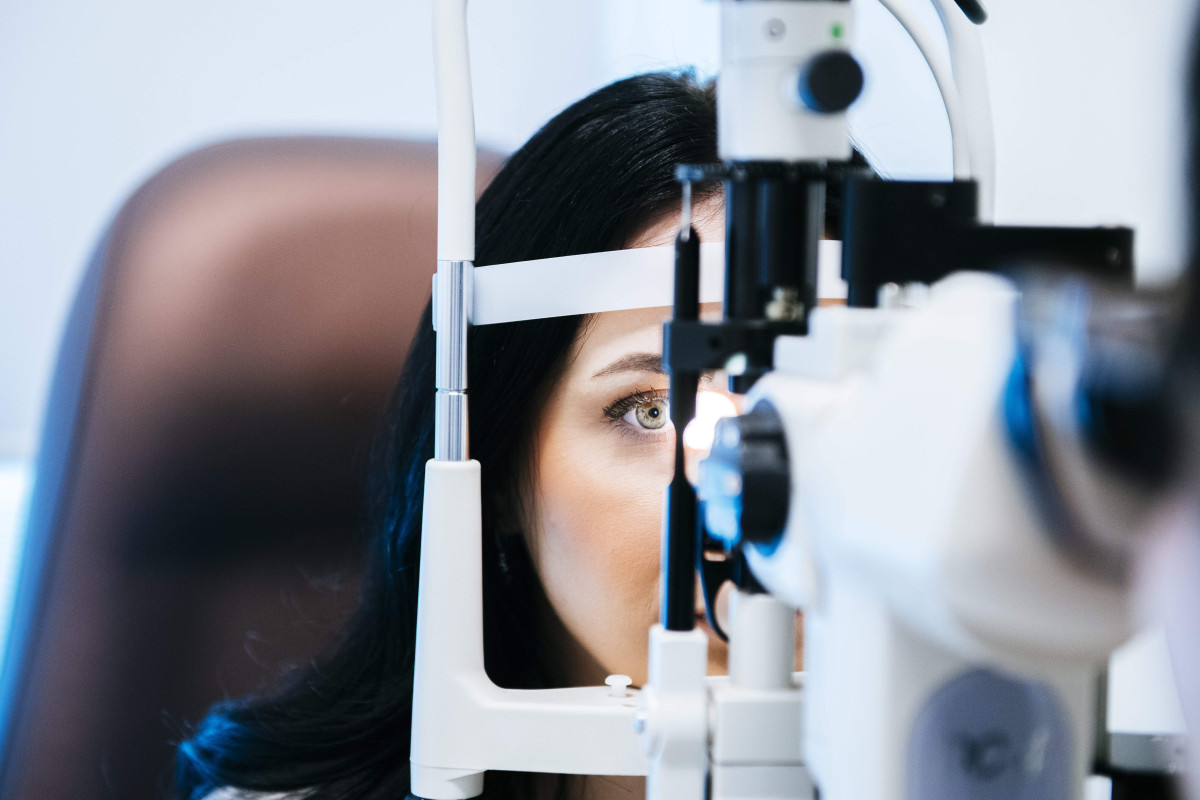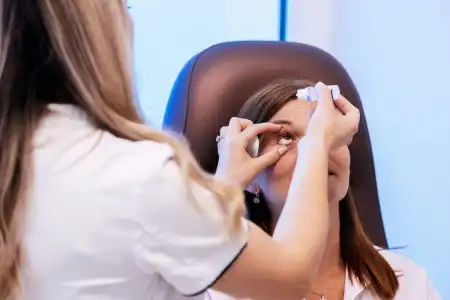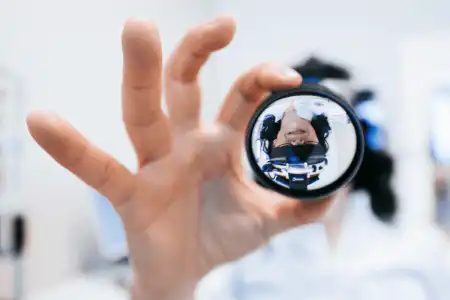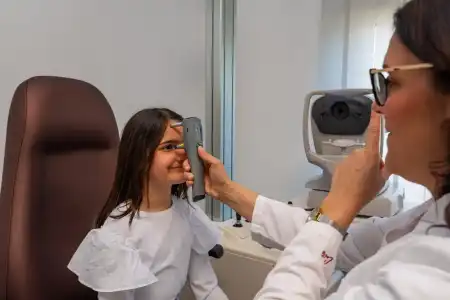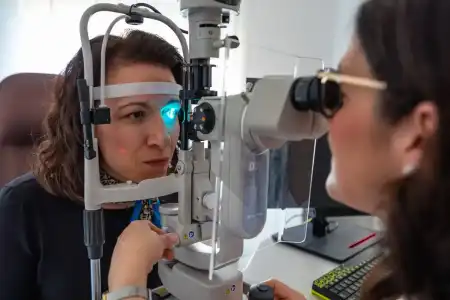An eye exam isn’t just about checking your prescription – your eyes can reveal the first signs of many systemic diseases, from diabetes and high blood pressure to neurological and autoimmune disorders. Early detection can often mean saving not only your sight – but your overall health.
When a patient comes in, they often say, “I just want to check my prescription.”
But an eye exam is never just that. Hidden in the quiet, intricate structures of the eye are often important messages about your whole-body health.
I don’t want this text to frighten you – but rather to encourage you to see the importance of eye care, not only for your vision, but because your eyes can be the first to warn you about a condition you never even suspected.
Over the years in ophthalmology, I’ve learned one thing: the eye often knows before we do. So let me take you behind the microscope – into a world where eyes speak, and we learn how to listen.
When the Retina Sends a Warning: Diabetes in the Eye
“Do you know how many people I’ve diagnosed with diabetes for the first time during an eye exam?”
I often say this to patients surprised to be referred to an internist after their appointment.
Diabetic retinopathy is a condition caused by high blood sugar – and it often develops quietly. No pain, no redness, no sudden vision changes.
During the exam, we may see tiny hemorrhages, microaneurysms, or swelling in the macula. These are all silent signs that blood sugar has been elevated for a while – often before a patient even knows they have diabetes.
That’s why eye exams are vital not just for those who know they have diabetes, but also for those who don’t – yet. Sometimes, the retina speaks first. And when it does, it’s time to listen carefully.
High Blood Pressure: The Silent Threat Eyes Can See
Some patients come in because of blurry vision, others due to headaches, or describe occasional “blackouts” in their sight. Then, during the exam, I say:
“Did you know you might have high blood pressure?”
Hypertension doesn’t hurt. That’s why it’s often called the silent killer. But what we can’t feel, our eyes can show.
Changes in the blood vessels of the retina – narrowing, twisting, small bleeds, or signs of past damage – often point to long-standing, uncontrolled hypertension.
The back of the eye is the only place in the body where we can directly observe blood vessels – without surgery, contrast dye, or invasive procedures.
That’s why an eye exam is often the first red flag for high blood pressure – and why it might prevent a stroke or heart attack.
We see what others can’t. And that’s why it’s not an exaggeration to say: an eye exam can save your life.
Neurological Disorders Seen Through the Eye
Sometimes, a patient arrives saying they’ve suddenly lost vision in one eye. Or they’re seeing double, or their eyelid suddenly drooped. In these cases, the eye exam becomes much more than just ophthalmology – it becomes neurology through the pupil.
Optic neuritis – inflammation of the optic nerve – is often the first sign of multiple sclerosis. And in many cases, the findings during an eye exam are what trigger a full neurological work-up. Symptoms can be subtle: blurriness, light sensitivity, eye movement pain, or reduced contrast.
But it’s not just inflammation – eye changes can hint at brain tumors or elevated intracranial pressure, which we may see as optic disc swelling.
In these moments, the eye becomes the brain’s lighthouse. That’s why sudden vision changes, double vision, or unexplained headaches should never be ignored – because an eye exam may hold the key to early diagnosis of neurological conditions.
When Dry Eyes Reflect Your Immune System
Dry eyes are a common complaint. But what many patients don’t realize is that chronic dryness isn’t always just due to air conditioning, screen time, or age – it can also be a sign of something deeper: your immune system.
In some people, dry eyes are the first visible sign of autoimmune diseases, such as:
🔹 Sjögren’s syndrome – where the immune system attacks the glands that produce tears and saliva
🔹 Rheumatoid arthritis, lupus, polymyositis, and other connective tissue diseases
A patient may come in with a gritty feeling in the eyes or discomfort while wearing contact lenses, and behind it lies a diagnosis involving the whole body.
As an ophthalmologist, I don’t treat autoimmune diseases – but I can recognize them, and refer patients to the right specialist in time.
And that’s crucial: to recognize patterns, connect symptoms, and raise the right suspicions.
The eye exam is often the starting point in a long diagnostic chain – and shouldn’t be dismissed, even when “it’s just dryness.”
Tumors and Other Serious Diagnoses Behind the Eye
One of the most challenging – and important – responsibilities in ophthalmology is recognizing when “blurry vision” is actually something more serious.
Brain tumors, pituitary tumors, even tumors in the eye socket can first present with unusual eye symptoms:
🔸 Double vision
🔸 Sudden vision loss in one eye
🔸 Drooping eyelid (ptosis)
🔸 Bulging eye (exophthalmos)
🔸 Visual field loss
In these cases, the eye exam isn’t the end – it’s the beginning of an urgent diagnostic process.
One of our most powerful tools is examining the optic nerve. Swelling (edema) or atrophy can indicate increased brain pressure or a mass pressing on the nerve.
Metastases from cancers like breast or lung cancer sometimes first appear through changes in vision or eye structure.
It may sound alarming – but that’s precisely why it’s important to say: the ophthalmologist is often the first to sense something’s wrong – and the one who helps start timely treatment.
Blood in the Eye: When Cholesterol, Anemia, and Blood Disorders Leave Clues
The back of the eye is unique in medicine – the only place where a doctor can directly see blood vessels in real time, without needles, contrast, or surgery.
There, in that tiny map behind the eye, we can detect:
🔹 High cholesterol – as fatty deposits, blockages, or emboli in the tiny arteries of the retina
🔹 Anemia – seen in a pale optic nerve, altered circulation, or reduced oxygen to the retina
🔹 Leukemia and other blood disorders – sometimes revealed through unusual bleeding, swollen vessels, or “wine stain”-like appearances in the retina
One patient came in because of “sparkles and floaters” in his vision. He expected a new glasses prescription. Instead, I sent him for urgent blood tests.
He had severe anemia caused by internal bleeding he hadn’t even noticed.
The eye doesn’t waste time guessing – it shows us the body’s status in real time.
It’s up to us to know how to read it.
An eye exam is not just a formality or a routine check of your prescription.
It’s a glimpse into your health—often revealing what you can’t yet feel, but your eyes already see.
That’s why it’s worth listening to what your eyes are whispering—because sometimes, they can tell us far more than we expect.

